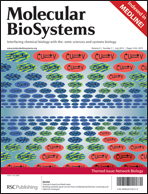Quantifying the similarity of monotonic trajectories in rough and smooth fitness landscapes
Abstract
When selection is strong and mutations are rare, evolution can be thought of as an uphill trajectory in a rugged fitness landscape. In this context the fitness landscape is a directed acyclic graph in which nodes are genotypes and edges lead from lower to higher fitness genotypes that differ by a single mutation. Because the space of genotypes is vastly multi-dimensional, classification of fitness landscapes is challenging. Many proposed summary characteristics of fitness landscapes attempt to quantify biologically relevant and intuitive notions such as roughness or peak accessibility in alternative ways. Here we explore, in different types of landscapes, the behavior of the recently introduced mean path divergence which quantifies the degree of similarity among evolutionary trajectories with the same endpoints. We find that monotonic trajectories in empirical and model fitness landscapes are significantly more constrained, with low median path divergence, than those in purely additive landscapes. By contrast, transcription factor sequence specificity (aptamer binding affinity) landscapes are markedly smoother and allow substantial variability in monotonic paths that can be greater than that in fully additive landscapes. We propose that the smoothness of the specificity landscapes is a consequence of the simple dependence of the transcription factor binding affinity on the aptamer sequence in contrast to the complex sequence-fitness mapping in folding landscapes.

- This article is part of the themed collection: Molecular BioSystems Network Biology

 Please wait while we load your content...
Please wait while we load your content...